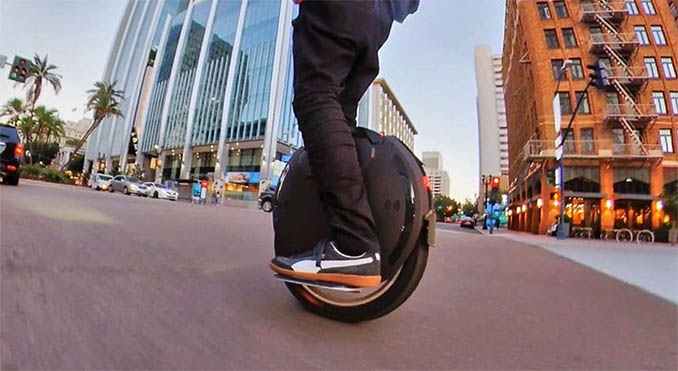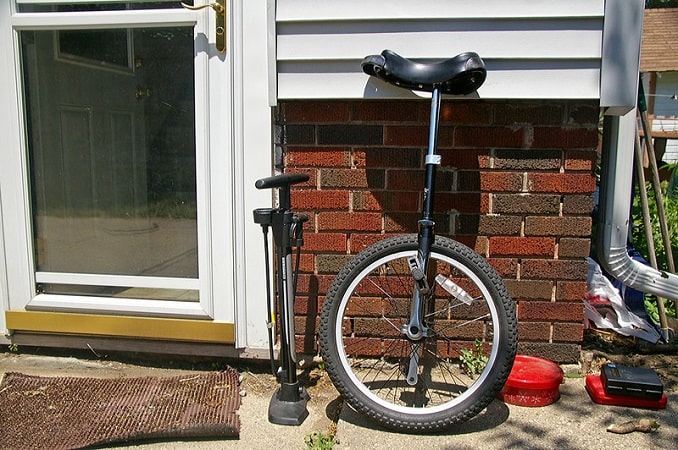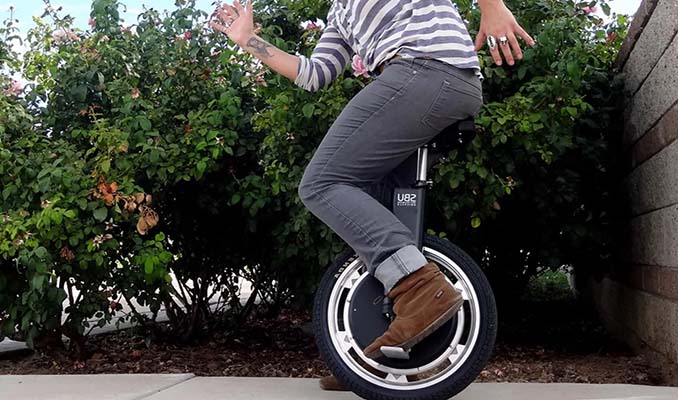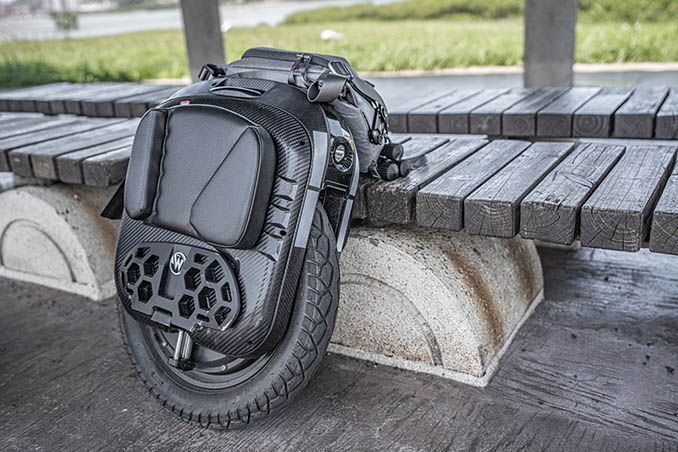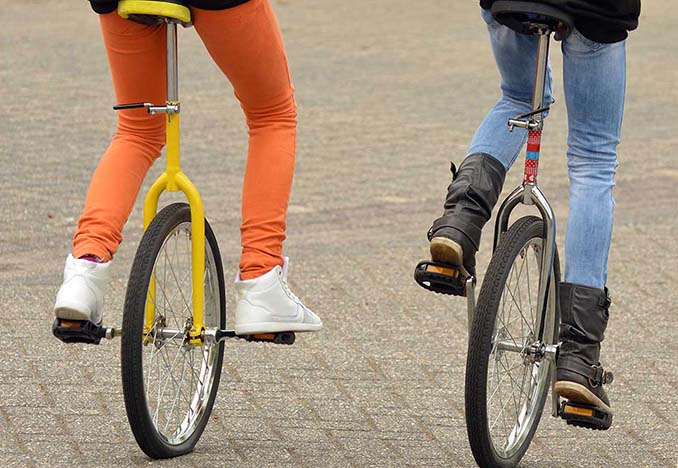It can be intimidating to take on a new hobby, especially one that involves a lot of physical activity. But, with the right equipment, guidance, and a bit of practice, you can become a skilled unicyclist in no time.
Before you can master the art of unicycling, however, it’s important to understand the parts that make up the machine.
In this comprehensive guide, we’ll cover everything you need to know about the parts of a unicycle, from the tires and wheels to the brakes and other accessories.
With this knowledge, you’ll be able to make informed decisions when purchasing or assembling a unicycle, maintain it properly, and even make adjustments on your own.
What are the parts of a unicycle?
A unicycle is a single-wheeled vehicle consisting of a wheel, pedals, and a saddle or seat. Although they may look intimidating, unicycles are actually quite simple in design.
The essential parts of a unicycle are the wheel, tires, saddle and seat, seat post, handlebars, grips, pedals and pedal arms, crank and bottom bracket, brakes, hub, spokes, chain, and accessories.
Related:

Understanding The Parts That Make Up A Unicycle
Tires and Wheels
The most important part of a unicycle is the wheel. The wheel is the round frame that attaches to the rest of the unicycle, and it’s what allows the rider to move forward.
The wheel is usually made of metal or plastic and is usually between 16 and 20 inches in diameter.
Tires are also important for a unicycle, as they provide traction and cushioning for the rider.
Tires come in a variety of sizes and materials, such as rubber, foam, and plastic. The type of tire you choose will depend on the type of terrain you plan to ride on.
Understanding the Saddle and Seat
The saddle and seat are the parts of the unicycle that the rider sits on. The saddle is a part of the unicycle that connects directly to the wheel and is usually made of leather or plastic.
The seat is typically a padded cushion that attaches to the saddle, providing comfort and support for the rider.
The Seat post
The seat post is a part of the unicycle that connects the saddle to the wheel. Seatposts come in a variety of heights and materials, such as aluminum, steel, and carbon fiber.
Seatposts also come with a quick-release mechanism, which makes it easy to adjust the height of the saddle.
Handlebars and Grips
Handlebars are the bars that extend from the saddle and allow the rider to steer the unicycle. The handlebars are usually made of aluminum or steel and come in a variety of shapes and sizes.
The grips are the textured surfaces on the handlebars that provide a firm grip for the rider.

Exploring the Inner Workings of a Unicycle
Pedals and Pedal Arms
Pedals and pedal arms are the parts of the unicycle that the rider uses to propel the machine forward. Pedals and pedal arms are usually made of metal or plastic and come in a variety of shapes and sizes.
The type of pedals and pedal arms you choose will depend on your riding style and the type of terrain you plan to ride on.
The Crank and Bottom Bracket
The crank and bottom bracket are the parts of the unicycle that connect the pedals and pedal arms to the wheel.
The crank is a part of the unicycle that the pedals and pedal arms attach to, and the bottom bracket is the part that connects the crank to the wheel.
The crank and bottom bracket are usually made of aluminum or steel and come in a variety of shapes and sizes.
Brakes
Brakes are not standard on a unicycle but can be helpful for certain types of riding or for riders who need extra assistance slowing down or stopping.
The most common types of brakes used on unicycles are rim brakes and disc brakes, with hydraulic brakes being less common. Foot brakes are also used but are not as effective.
The type of brake that is best for a unicycle depends on the rider’s needs and the type of riding they plan to do.
The Hub
The hub is a part of the unicycle that connects the wheel to the frame. The hub is usually made of aluminum or steel and is usually between 16 and 20 inches in diameter.
The hub is what allows the wheel to spin freely and is responsible for transferring the power from the pedals to the wheel.
The Spokes
The spokes are the parts of the unicycle that attach the hub to the wheel. The spokes are usually made of steel and come in a variety of sizes and lengths.
The number of spokes on a unicycle will vary depending on the size and type of wheel, but typically there are between 24 and 36 spokes.
The Chain
The chain is a part of the unicycle that connects the pedals and pedal arms to the wheel. The chain is usually made of metal and comes in a variety of lengths and thicknesses.
The type of chain you choose will depend on the type of terrain you plan to ride on.
Unicycle Accessories
Unicycle accessories can be used to customize and improve the performance of a unicycle.
Accessories such as lights, reflectors, mudguards, and baskets can make a unicycle safer and more comfortable to ride.
Other accessories, such as racks and fenders, can also be used to improve the performance of a unicycle.
How to Assemble a Unicycle
Assembling a unicycle can be a daunting task for a beginner, but with a few simple steps, it’s not as hard as it looks.
The first step is to attach the wheel to the frame. Once the wheel is attached, the next step is to attach the pedals and pedal arms to the crank and bottom bracket.
After that, the handlebars and grips can be attached to the frame. Finally, the seat post and saddle can be attached to the frame.
Unicycle Maintenance and Care
As with any vehicle, unicycles require regular maintenance and care in order to remain safe and in good condition.
Regularly check the tires and wheels for wear and tear and make sure to keep them properly inflated. The chain should also be checked regularly and lubricated as needed.
Finally, it’s important to inspect the saddle, seat post, handlebars, and grips for any signs of wear and tear. If any of these parts need to be replaced, make sure to do so as soon as possible.
Conclusion
Unicycles can be an intimidating machine to approach, but with the right knowledge and understanding of the parts, you can become a skilled unicyclist in no time.
This comprehensive guide has provided you with the information you need to know about the various parts of a unicycle and how to assemble and maintain it.
With this knowledge, you can make informed decisions when purchasing or assembling a unicycle, maintain it properly, and even make adjustments on your own.
Whether you’re a beginner or an experienced enthusiast, understanding the parts of a unicycle is essential to enjoying the sport and staying safe. So, get out there and start riding!



